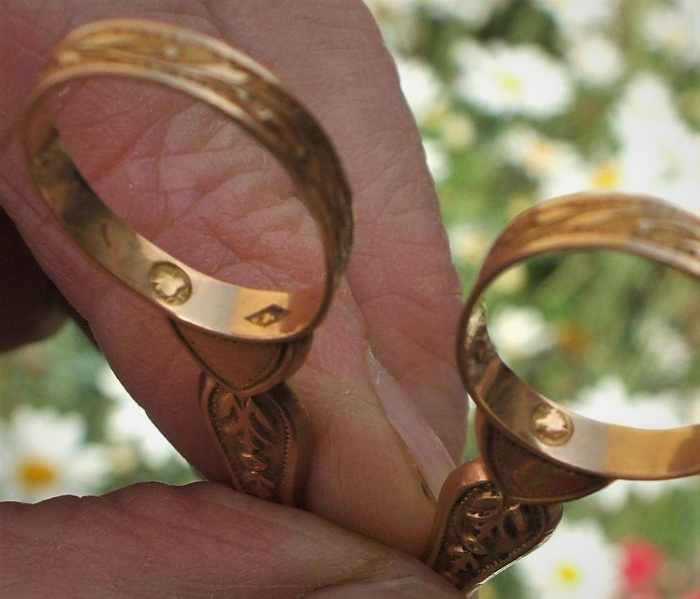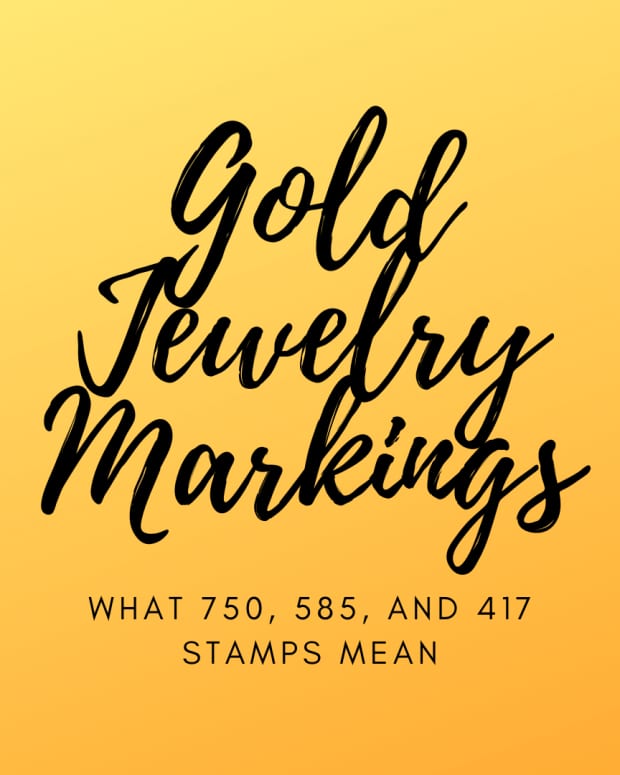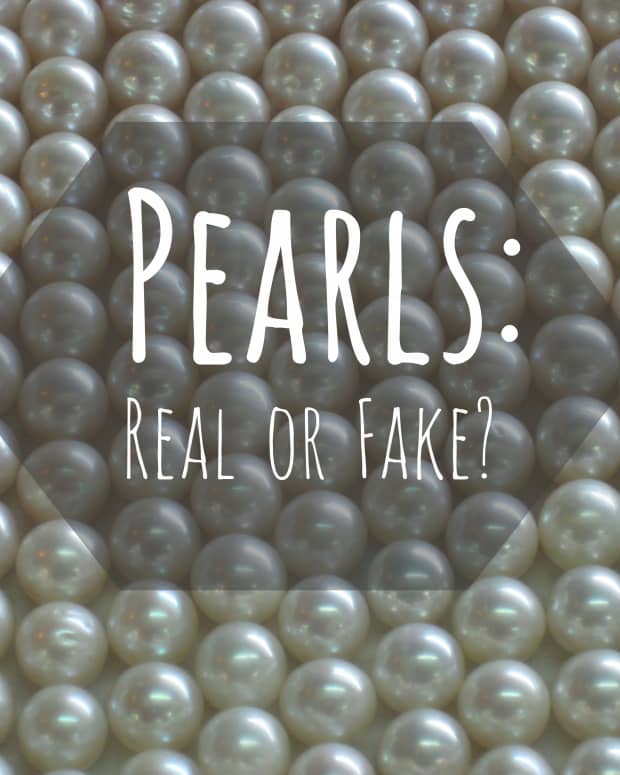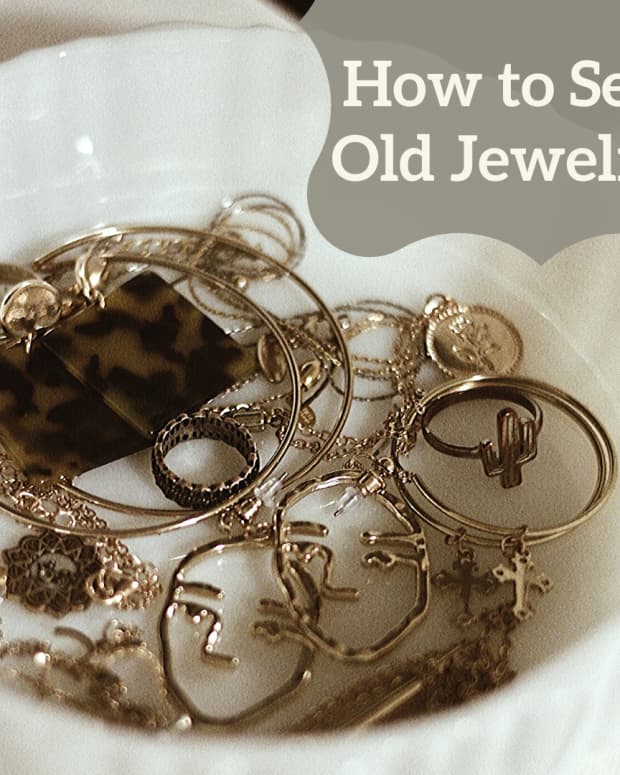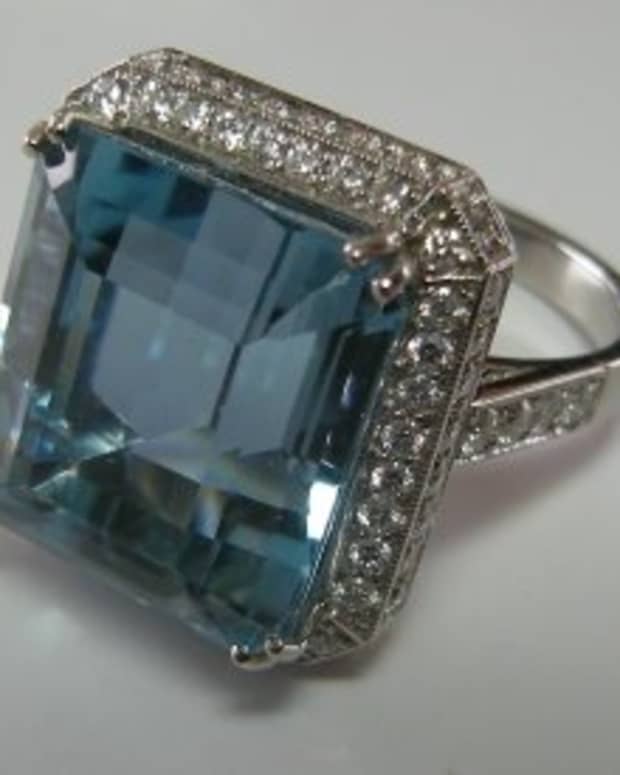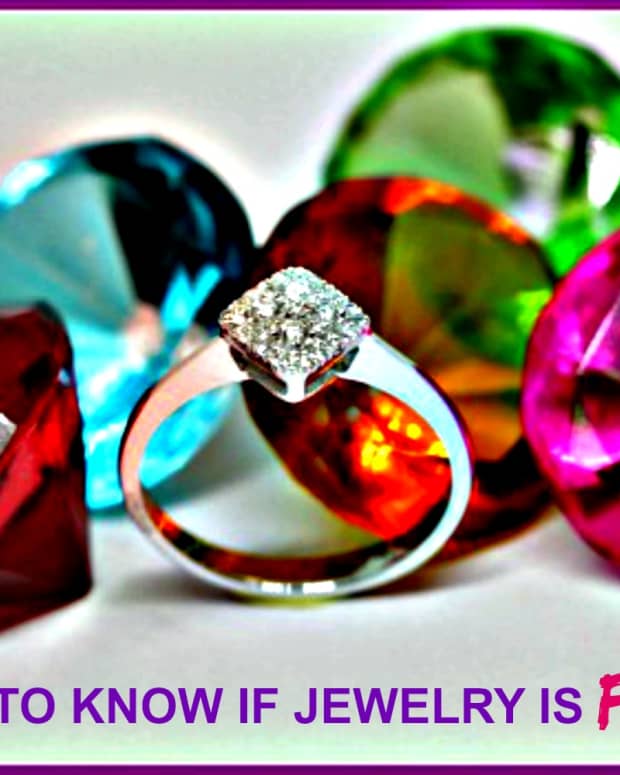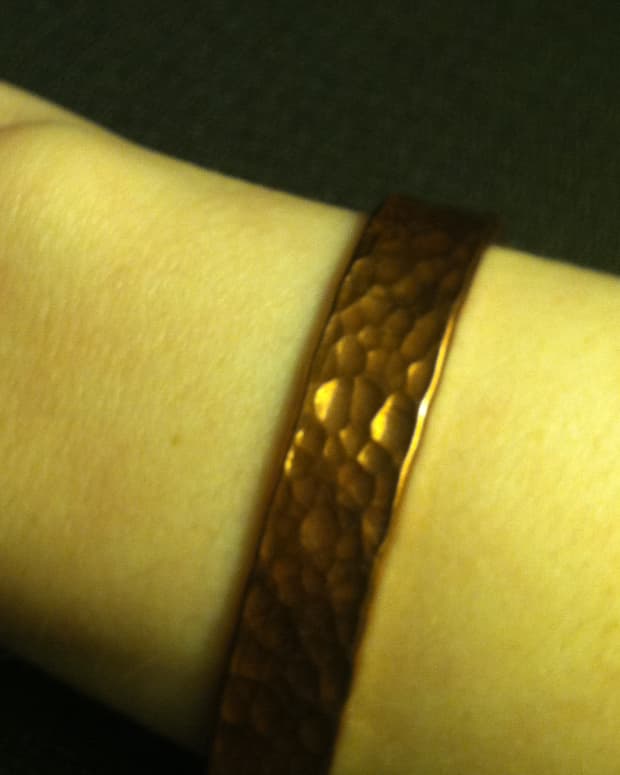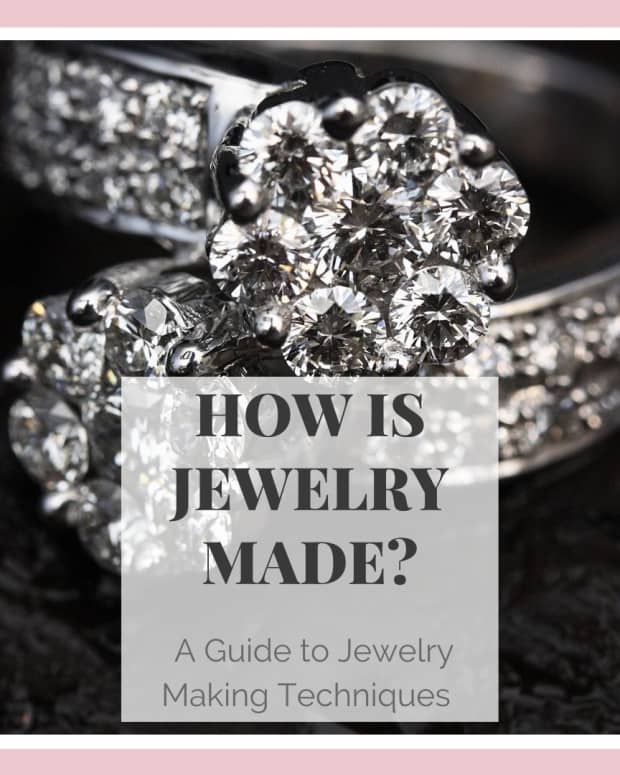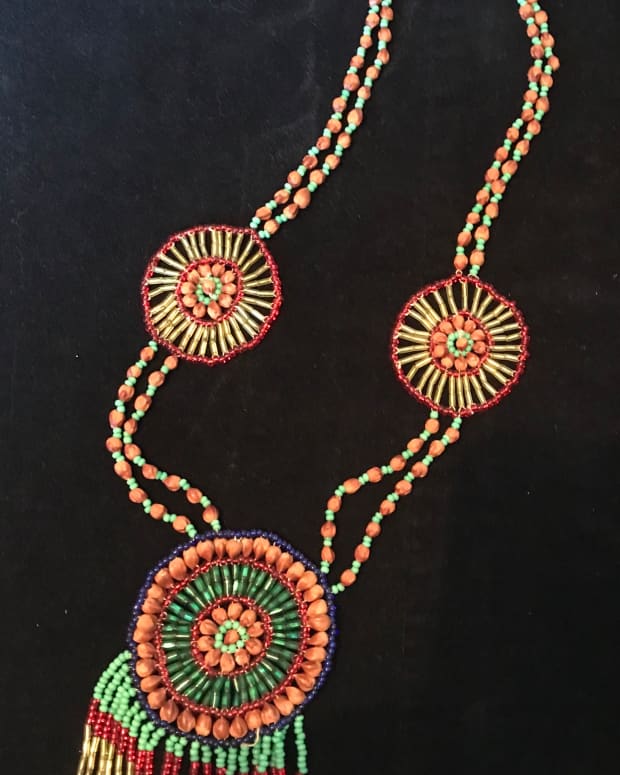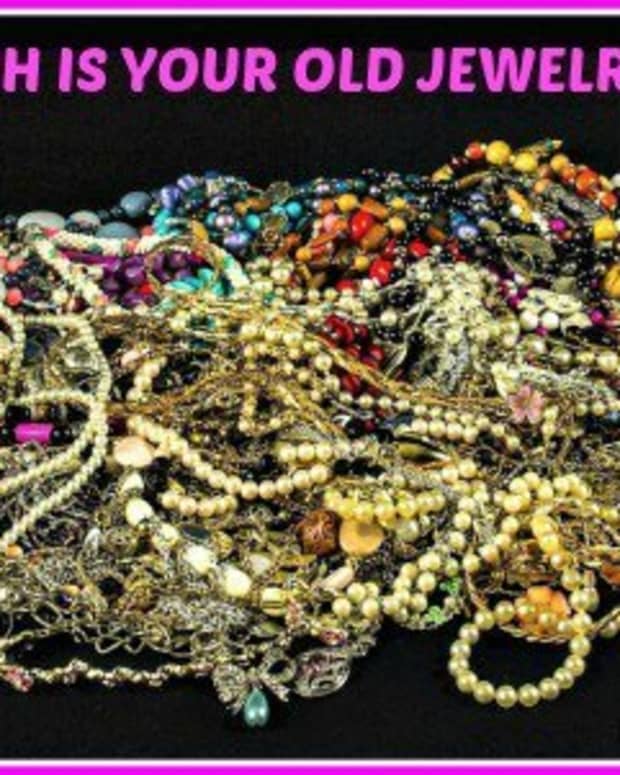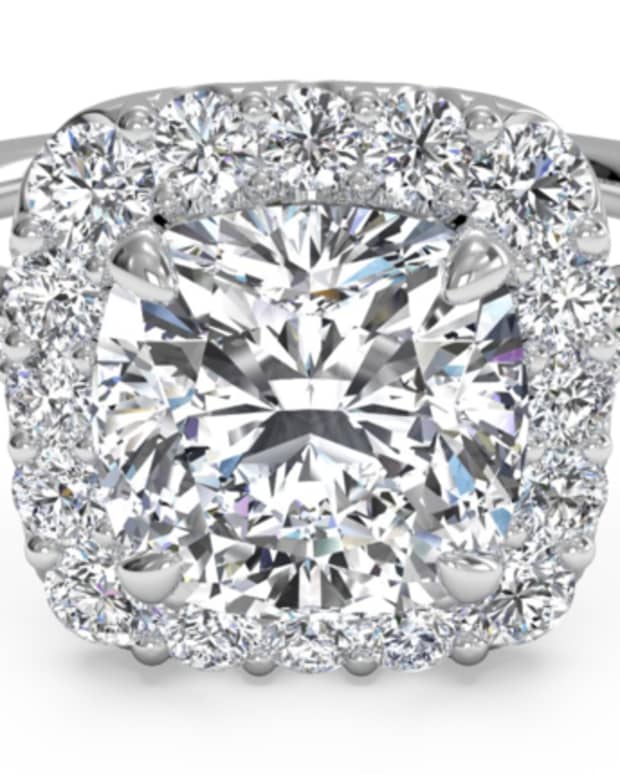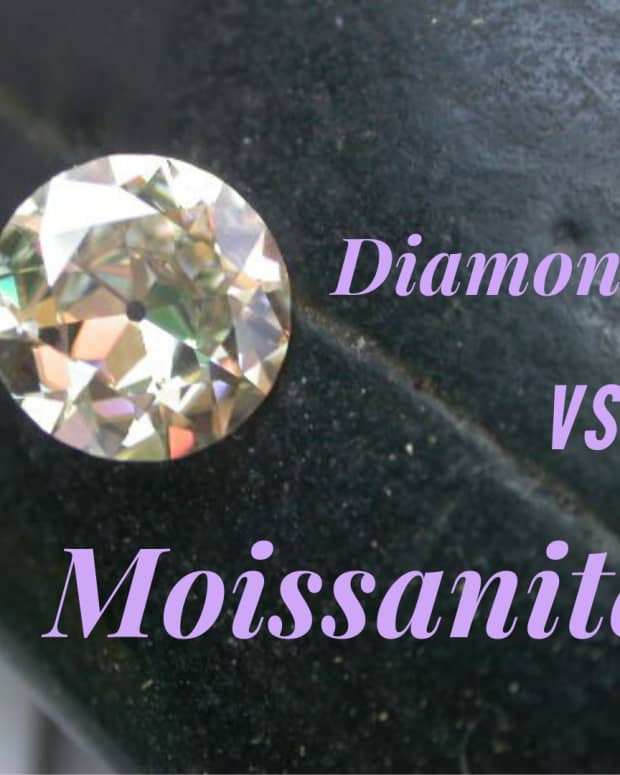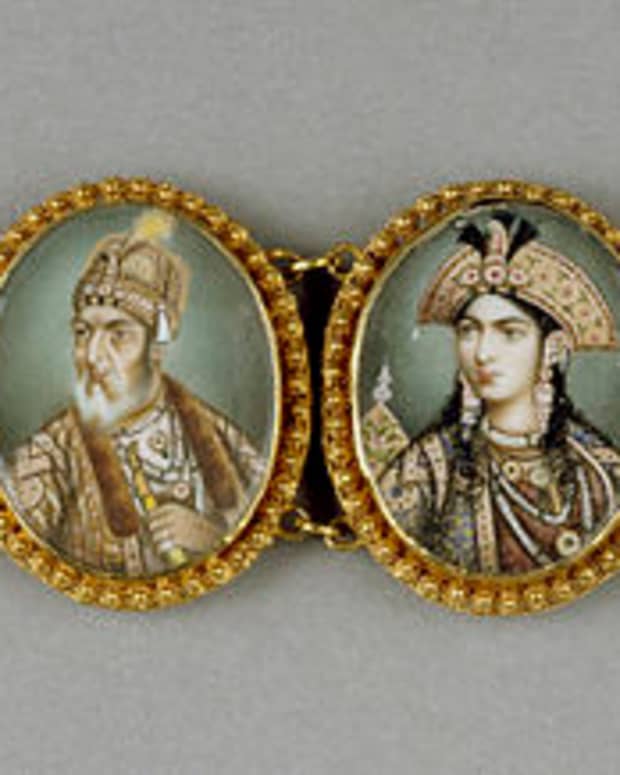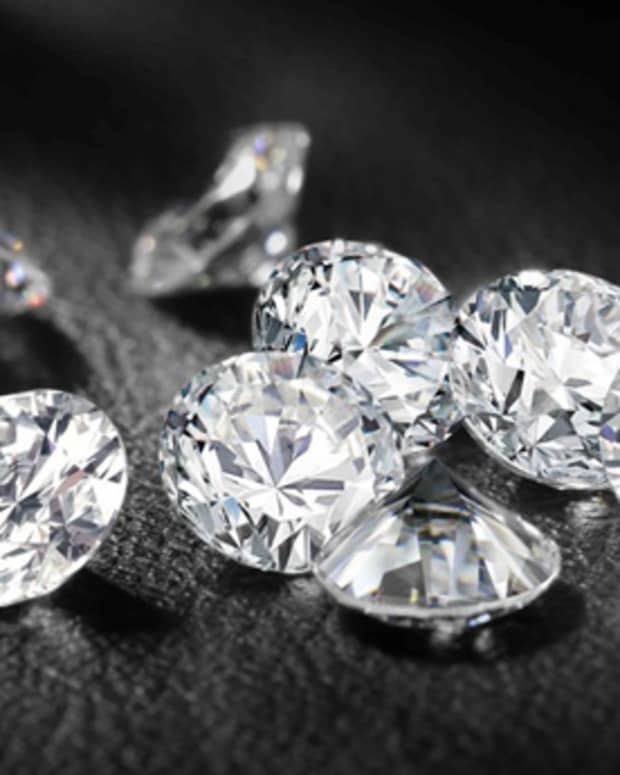Gold Testing: How to Tell What Karat Your Gold Is
Scientist and author, Beth enjoys the beauty and craftsmanship of real gold jewelry.
How to Test Gold Quality at Home
Jewelers and gold dealers carry out a metal assay (or test) before they purchase a gold item. This is the only sure way to find out if an object is made of real gold. An assay test kit contains several different solutions of dilute nitric acid and a touchstone. The touchstone is made of a dark acid-resistant rock such as slate. The jeweler rubs the gold object gently across the touchstone so that it leaves a streak mark. They then apply each of the acid solutions in turn to the mark. The higher the gold content of the metal, the less of it will vanish when acid is applied. Assay kits can be bought on-line for home use, so you can check the karat of your own gold items. I use this Gold Jewelry Acid Solutions Test Kit. The kit consists of six small bottles of acid (one for each type of metal to be tested), and a testing stone.
How to Carry Out an Assay Test
- Softly scratch the item of jewelry with the testing stone, so that it leaves a gold mark on the touchstone.
- Place a drop from an acid bottle on the mark. Start with the lowest karat value test and then work upwards.
- If the gold mark doesn’t change in color, or dissolve, then it is of a higher karat than the assay.
- Continue testing with the higher-karat acid bottles, and repeat until the gold mark starts to change or dissolve. This will indicate that its karat is less than that written on the label of the last acid bottle you used.
How to Test Gold Karat Using Assay Chemicals and Touchstone
How Do Jewelers Test Gold and Why Do You Often Only Get Scrap Value?
Jewelers are shrewd business people. The value of gold fluctuates from day to day. Their ability to accurately assess the value of gold items is essential for them to turn a profit. Their offer to you will be related to the price they can achieve when selling on the item. They use science (objective) and experience (subjective) to test gold.
- A jeweler will examine your gold trinket using a loupe magnifying glass. I always take a 20 x jeweler's loupe with me when buying jewelry so that I can do the same. Using a loupe means the fine detail of any hallmarks can be read. The jeweler will check the authenticity of the hallmark and feel the weight of the item.
- Using acid and a touchstone, they will check the karat value of the metal. The chemical reaction of nitric acid on gold demonstrates the alloy content of the object.
- If the jeweler is satisfied with the result thus far, he will look at the quality of workmanship and the integrity of the item. If it is badly damaged, or of poor (tourist) quality, you are unlikely to be offered any more than scrap value.
Bars of gold are an investment vehicle by themselves and turning them into jewelry often does not increase their commercial value. The resale value of secondhand gold jewelry depends on supply and demand and there may be little demand for old-fashioned or dated pieces. Unless an item is individually crafted and of exquisite quality, second-hand values are low as the jeweler will simply be selling them on to be melted down into gold ingots for investors.
Read More From Bellatory
Karat Rating Measures Gold Purity
Karat (spelled "carat" in the UK) tells you the percentage of real gold in your jewelry relative to other metals. It indicates the fineness and quality of your item. The higher the karat value, the greater the proportion of actual gold metal in your object. An 18 karat gold ring will be made from 75% pure gold and 25% base metal (or alloy). A 9 karat gold ring will contain only 37.5% pure gold. In the US and Canada, the most frequently used karat values are 14 karat and 18 karat (meaning 58.5% and 75% gold respectively). In the UK, 9, 18 and 24 carat gold are the most frequently used alloys.
Assay Marks and Hallmarks
Hallmarks show that an assay test has been carried out on the gold object to confirm its karat rating. The reliability of the hallmark depends upon the country of origin. State-controlled assay offices imprint a mark onto the gold showing the year and place of assay together with the percentage of gold found, or the karat rating. The hallmark is very small so you may need a magnifying glass or jeweler's loupe to see it clearly.
How to Tell if Gold is Real or Fake
The acid test described above is the best way to determine whether or not an item is made from real gold. There are other ways to tell if your gold is fake, but they may not give such a clear result.
- Look at the color: The deeper the orange-yellow color, the higher the karat.
- Weight of the item: Too light indicates it's been adulterated with a lesser metal. Gold is heavy. You can feel the weight of it in your hand. Be suspicious if an object is lightweight. Gold-plated items may fool you by looking like solid gold until you judge their weight.
- Sound quality: Pure gold has a distinct acoustic signature.
- Malleability: Pure gold is a very soft metal and will dent easily. A gold-plated item and fake gold items will be harder because they have been crafted from tougher base metal.
- Use a magnet: Gold is not attracted to a magnet; a reaction indicates iron is present.
- Check the hallmark: Are the assay marks clear and from a country you trust? On real gold, a hallmark should clearly show the year and location of the assay test center. Consult reference books to confirm that you have a genuine hallmark. Be aware that on older or well-worn pieces, the hallmark may be illegible or missing.
- Carry out an assay test: Genuine gold does not react with nitric acid. A lesser metal or fake gold will foam or dissolve when a drop of nitric acid is applied. Wear protective clothing as you are handling acid.
- Price: Compare prices before buying so that you have a good idea of the correct market value. Remember the old adage. "If the price sounds too good to be true, then it probably is."
Gold Varies in Color From White to Red
There are many variations in the color of gold, ranging from white through to deepest red. Pure gold is a deep golden yellow orange. In its purest state it is very soft and although this makes it very easy to work with, for everyday use a harder metal is needed. Pure gold is therefore combined with a cheaper base metal to form an alloy. Copper or silver are commonly used in combination with gold to strengthen it. Thus what is commonly referred to as white gold has a high proportion of silver in the alloy. Similarly red gold contains a lot of copper in the alloy.
What Acid is Used in Gold Testing Kits?
Nitric acid is used to test the purity of gold objects. Gold is the only metal that is dissolved by this acid. A tiny scrape of the gold item is placed on a touchstone. Nitric acid reacts when brushed onto real gold and you will see fizzing if your gold jewlelry is genuine. A retail metal testing kit (I recommend a good one in the first paragraph of this article) consists of several different strengths of acid solution. The different levels of nitric acid enable you to test for different karat numbers.
How to Spot 9, 14, 18, 22, and 24 Carat Gold
- 24 carat: 99.9% pure gold. It is highly valuable but very soft and not usually used to make fine jewellery.
- 22 carat: 91.6% pure gold. Also very soft, so not ideal for stone set jewellery. It is used for plain gold jewellery, such as wedding bands.
- 18 carat: 75% gold and contains metal alloys for strength and color. White metals are added to create white gold. Copper is added to create rose gold.
- 14 carat: It contains just 58.5% gold content which makes it more affordable.
- 9 carat: 37.5% gold has a high percentage of other metals, making it stronger and cheaper to buy.
Can Vinegar be Used To Test Gold?
Vinegar (ascetic acid) can be used to clean some metals. It is not really a testing fluid, it is more of a cleaning agent. If you rub an object made of pure gold with neat vinegar it will remove marks and leave your jewelry shiny and clean. However, if the metal is not real gold, the acid will cause pitting (small holes) on the surface and your ring or bracelet will be damaged.
This article is accurate and true to the best of the author’s knowledge. Content is for informational or entertainment purposes only and does not substitute for personal counsel or professional advice in business, financial, legal, or technical matters.

